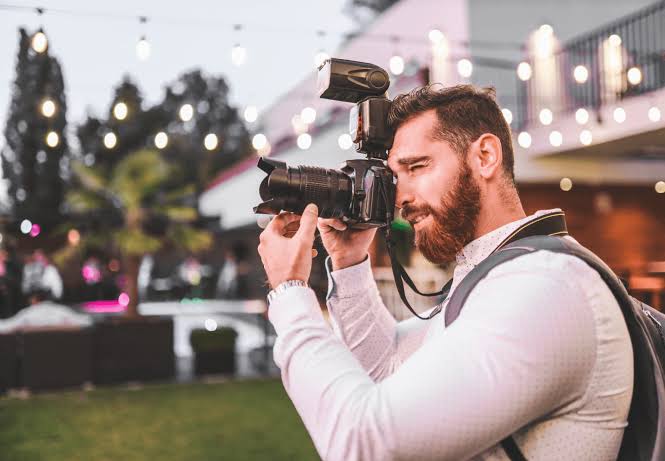Understanding the Significance of Event Photography
Event photography serves purposes. Its primary function is to freeze moments in time that can be treasured for years. Photos from milestones in life often become cherished mementos allowing people to reflect on the experiences, feelings and individuals involved. For families wedding photos hold a significance as they encapsulate the love and happiness of that special day.
In addition event photography is essential, for business marketing and branding. Corporate gatherings, product unveilings and conferences provide chances for companies to highlight their brand image. Quality images can be utilized in materials, social media promotions and company websites. They not serve as records of the event but also reflect the companys professionalism and meticulousness.
Essential Skills for Event Photographers
To thrive in the world of event photography a combination of skills and personal attributes is crucial. Here are the key abilities that are essential for event photographers success.
Technical Know How A solid grasp of photography principles is vital. This encompasses understanding camera settings, lighting methods, composition techniques and post processing. Event photographers must be adept at adjusting to lighting scenarios whether indoors or outdoors and making tweaks on the spot.
Imagination Capturing the spirit of an occasion calls for imagination. Photographers should have the knack for discovering perspectives capturing spontaneous moments and crafting visually captivating arrangements. This creativity plays a role, in narrating a story through images making the final collection more captivating.
People Skills Event photographers frequently engage with a mix of individuals. Effective communication skills are crucial for establishing connections with clients and attendees. Photographers should be approachable and blend into the background while still documenting significant moments.
Planning and Organizing: Successful event photography requires planning. Understanding the event schedule, key moments to capture and the clients preferences helps photographers organize their approach. Being prepared allows photographers to handle environments, effectively.
Tips for Capturing Event Photos
To capture quality images at an event careful consideration and planning are essential. Here are some tips for photographers to create stunning visual stories:
Explore the Venue: If possible visiting the venue ahead of time can provide insights, into the lighting conditions and potential backgrounds. Getting familiar with the layout helps photographers plan their shots and find the spots to capture moments.
Be Ready for Lighting Conditions: Events can take place in settings, from dimly lit rooms to bright outdoor spaces. Photographers should come equipped with gear, such as lenses that perform well in light and external flashes if needed. Knowing how to work with light can also improve the quality of the photos.
Capture Unscripted Moments: While staged photos have their place, unplanned moments often convey a truer narrative. Photographers should stay alert to the connections between guests, spontaneous laughter and heartfelt feelings. These authentic instances can evoke emotions and weave a story that resonates with viewers.
Explore Angles: Using angles and viewpoints can enhance the visuals. Trying out shots, low perspectives and incorporating elements can lead to compositions that captivate the audience. A combination of shots and close ups can also contribute to a story.
Connect with Attendees: Building a rapport with guests can result in more natural expressions and interactions. By engaging with individuals at the event, they feel at ease, leading to more candid photographs. Photographers should find a balance between guiding some shots and allowing moments to happen organically.
Post-Processing and Presentation
After an event wraps up the job of a photographer doesn't end there. Theres a step involved in editing photos that can really improve the final result. Here are some things to keep in mind during post processing:
Sorting and Selecting: Start by going through all the pictures taken at the event. Selecting the shots that best capture the story and getting rid of duplicates or less appealing images is known as culling. While this task might take time it guarantees that only the top quality photos make it into the final selection.
Maintaining Editing Style: Keeping a consistent editing style is crucial for a polished final collection. Adjusting factors like exposure, contrast, color balance and cropping can enhance the appearance of the images. By using software photographers can develop a style that showcases their creative vision.
Presenting The Final Set: Once the editing is done photographers should deliver the images in a way that meets the clients preferences. This could include options such as downloads, prints or photo albums. Offering clients a range of formats ensures they can cherish the memories in diverse ways.
Building a Portfolio and Marketing
For photographers capturing moments at events building an impressive portfolio is crucial, to draw in clients. Displaying a variety of occasions and styles showcases adaptability and skill. Promoting ones work through channels like social media, networking and partnering with event organizers can help solidify a photographers standing in the field. Moreover encouraging clients to share their experiences and tag the photographer on media can lead to word of mouth promotion. Positive feedback and reviews can further boost credibility and entice new customers.
Conclusion
Event photography plays a role in capturing the essence of occasions offering clients cherished mementos. Through honing skills utilizing approaches and producing top notch photos photographers can weave captivating stories that connect with their viewers. With the increasing popularity of event photography those who dedicate themselves to their art and stay attuned to evolving trends are poised for success in immortalizing lifes cherished memories.
